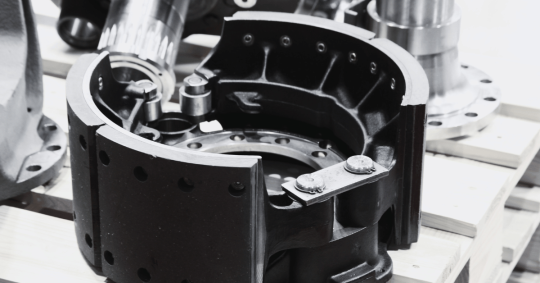How to Choose the Right Clutch or Coupling for Your Machinery

Choosing the right clutch or coupling is a key step when building or maintaining any industrial drive system. These components connect motors to driven parts like gearboxes, pumps or conveyors. If they’re not matched correctly to the job, you could face reduced performance, extra wear or equipment breakdowns.
Here’s a simple guide to help you with industrial clutch selection and picking the right machinery couplings for your application.
1. Understand How Your Equipment Works
Start by looking at what the machine does day to day. Ask yourself:
- Does it run all the time or stop and start?
- Are loads steady or do they change often?
- Is there any vibration or shock when starting?
- What are the torque and speed (RPM) needs?
This information is important when deciding which clutch or coupling fits best.
2. Choose the Right Size
Every clutch or coupling is designed to handle a specific level of torque and speed. If your machine demands more than what the part can take, it will wear out too fast or even fail.
It’s smart to pick a part that can handle slightly more than your normal load. This adds some protection if conditions change.
3. Match the Product to the Environment
Is your setup exposed to dust, heat, oil or moisture? Some couplings and clutches are sealed and can handle tough conditions. Others are better suited to clean indoor spaces.
For power transmission in the UK, where the weather can be unpredictable, it's important to think about temperature changes and possible exposure to moisture or debris.
4. Think About Alignment and Space
Not all machines are perfectly aligned. If there’s any misalignment between parts, you’ll need a flexible coupling to allow for small shifts. If the shafts line up exactly, a rigid coupling might work better and offer more precise performance.
Also, check how much space you have. Some parts need more room to install or maintain.
5. Factor in Maintenance Needs
Some clutches and couplings need ongoing care, like lubrication or inspections. Others are built to run for years without much attention.
If your site runs long shifts or can’t afford downtime, look for low-maintenance options. This helps keep your operations running without interruption.
6. Ask an Expert
If you’re unsure which part to pick, speak with a trusted supplier who understands industrial clutch selection and power transmission systems. Speak to us today.
They can help match the right solution to your needs, based on torque, speed, layout and environment. You’ll also get advice on fitting and long-term support.
Final Thought
Choosing the right coupling or clutch is about more than just specs. It’s about knowing how your system works, what conditions it runs in and what level of performance you need.
With careful planning, you’ll get a part that lasts longer, runs smoother and keeps your machinery working at its best.
Need help finding the right solution?
Our experienced team is here to provide expert advice and help you choose the perfect component for your application. Contact us today to discuss your requirements.